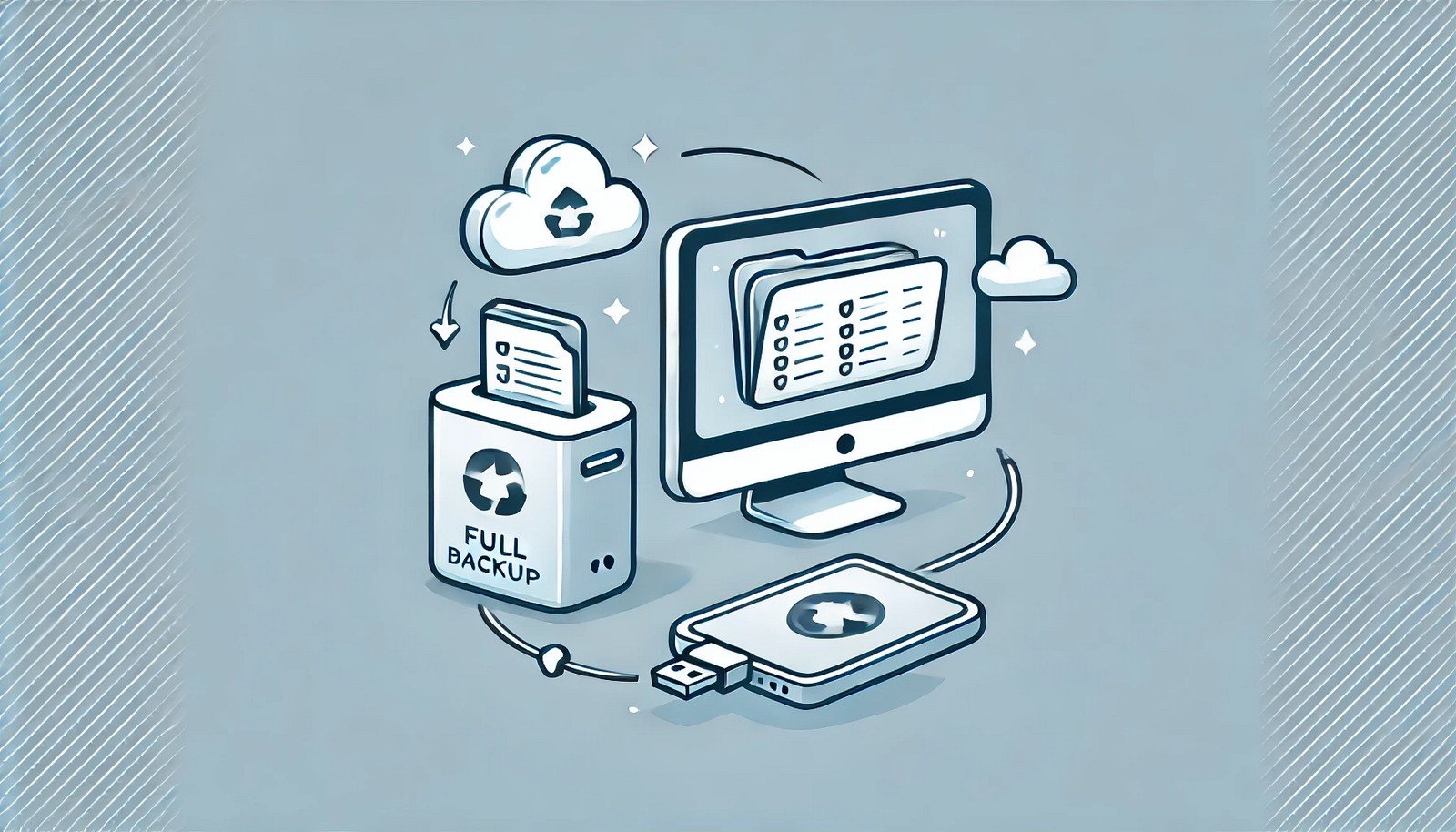Full Backup
 (Representational Image | Source: Dall-E)
(Representational Image | Source: Dall-E)
Quick Navigation:
- Full Backup Definition
- Full Backup Explained Easy
- Full Backup Origin
- Full Backup Etymology
- Full Backup Usage Trends
- Full Backup Usage
- Full Backup Examples in Context
- Full Backup FAQ
- Full Backup Related Words
Full Backup Definition
A full backup is a complete copy of all data, files, and system information at a given point in time. This ensures that all stored information is preserved in a single backup set. It is typically used for disaster recovery, data migration, and archiving purposes. While full backups provide maximum data security, they require substantial storage space and time for completion. Many organizations schedule full backups periodically while using incremental or differential backups for efficiency.
Full Backup Explained Easy
Imagine you have a huge collection of photos, videos, and documents. A full backup is like taking a complete copy of everything and storing it in a safe place. If something happens to your computer, you can restore everything from that copy. It’s like making a backup of your schoolwork so you never lose anything important.
Full Backup Origin
The concept of a full backup emerged with early computing when data loss was a significant risk due to hardware failures. In the 1960s and 1970s, businesses began using magnetic tapes to store full system backups. Over time, advancements in storage technologies, such as hard drives and cloud storage, improved the speed and reliability of full backups.
Full Backup Etymology
The term "full backup" comes from the idea of making a "complete" or "entire" copy of data. The word "backup" originates from the concept of supporting or safeguarding something by keeping a duplicate in case of failure.
Full Backup Usage Trends
With the rise of cloud storage, automated backup solutions, and cybersecurity threats, full backups have remained a critical component of data protection strategies. Many organizations follow the 3-2-1 backup rule: keeping three copies of data, stored on two different types of media, with one copy off-site. While full backups were once limited to enterprise environments, cloud services now enable individuals and small businesses to perform regular full backups with ease.
Full Backup Usage
- Formal/Technical Tagging:
- Data Backup
- Disaster Recovery
- IT Security - Typical Collocations:
- "Perform a full backup"
- "Schedule a full backup"
- "Restore from a full backup"
- "Full backup process"
Full Backup Examples in Context
- A company performs a full backup every Sunday to ensure all critical data is securely stored.
- Before upgrading their operating system, the IT department advises users to create a full backup of their files.
- Cloud storage services offer automatic full backups to protect user data against accidental deletion.
Full Backup FAQ
- What is a full backup?
A full backup is a complete copy of all files and data at a specific point in time. - How often should I perform a full backup?
It depends on data sensitivity, but businesses often perform weekly or daily full backups. - What is the difference between a full backup and an incremental backup?
A full backup copies everything, while an incremental backup only saves changes made since the last backup. - Does a full backup take a long time?
Yes, full backups take longer and require more storage than incremental or differential backups. - Can I automate full backups?
Yes, many software solutions allow users to schedule full backups automatically. - Where should I store my full backups?
Full backups should be stored on external drives, cloud storage, or offsite locations for safety. - Are full backups necessary if I use cloud storage?
Yes, even with cloud storage, full backups ensure an additional layer of data protection. - What happens if a full backup fails?
Backup software usually generates an error report, and users should retry the process or check storage capacity. - Can I restore individual files from a full backup?
Yes, most backup software allows selective restoration of files instead of the entire backup. - Is a full backup secure?
Yes, but it should be encrypted and stored securely to prevent unauthorized access.
Full Backup Related Words
- Categories/Topics:
- Data Protection
- System Recovery
- Cloud Storage
Did you know?
In 2012, an IT employee accidentally deleted crucial production data at Pixar, nearly erasing the entire movie Toy Story 2. Fortunately, a full backup existed, allowing the company to recover the lost data and finish the film on time.
PicDictionary.com is an online dictionary in pictures. If you have questions or suggestions, please reach out to us on WhatsApp or Twitter.Authors | Arjun Vishnu | @ArjunAndVishnu

I am Vishnu. I like AI, Linux, Single Board Computers, and Cloud Computing. I create the web & video content, and I also write for popular websites.
My younger brother, Arjun handles image & video editing. Together, we run a YouTube Channel that's focused on reviewing gadgets and explaining technology.



Comments powered by CComment